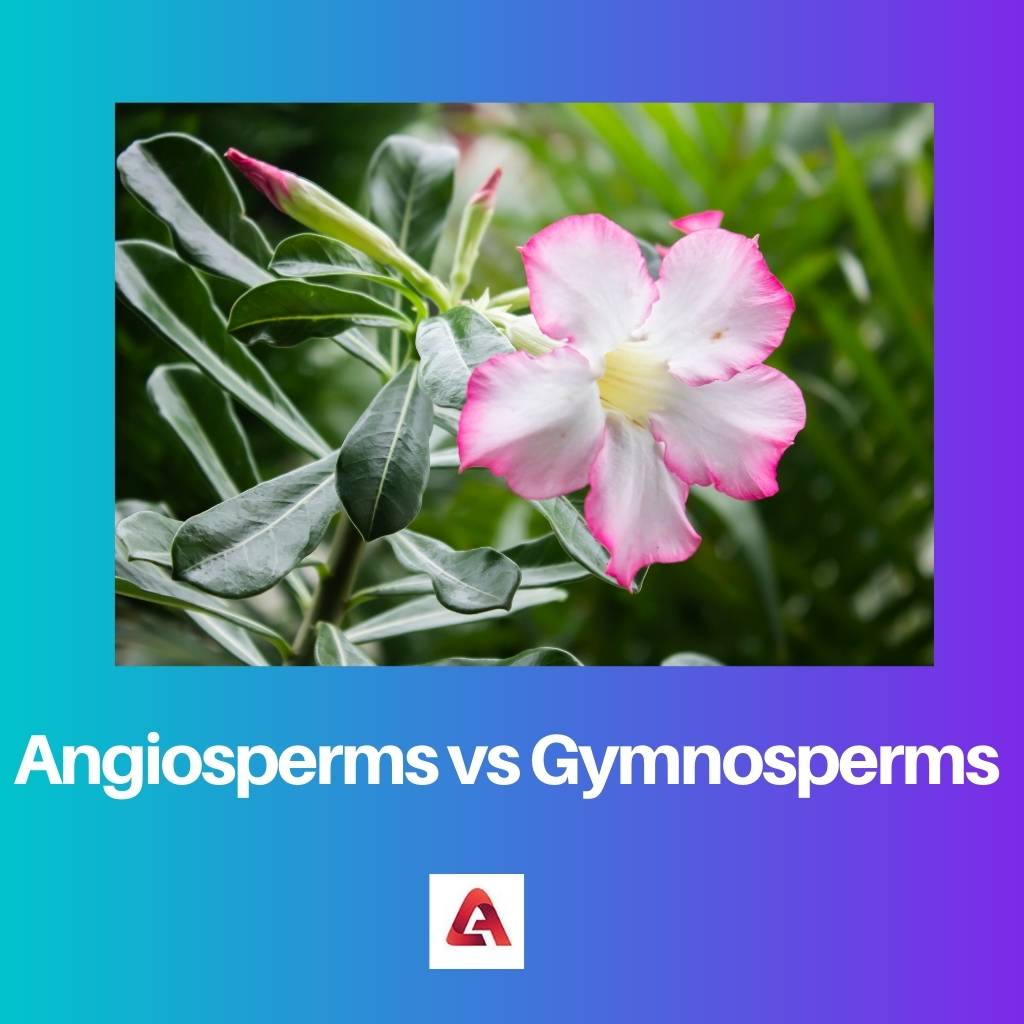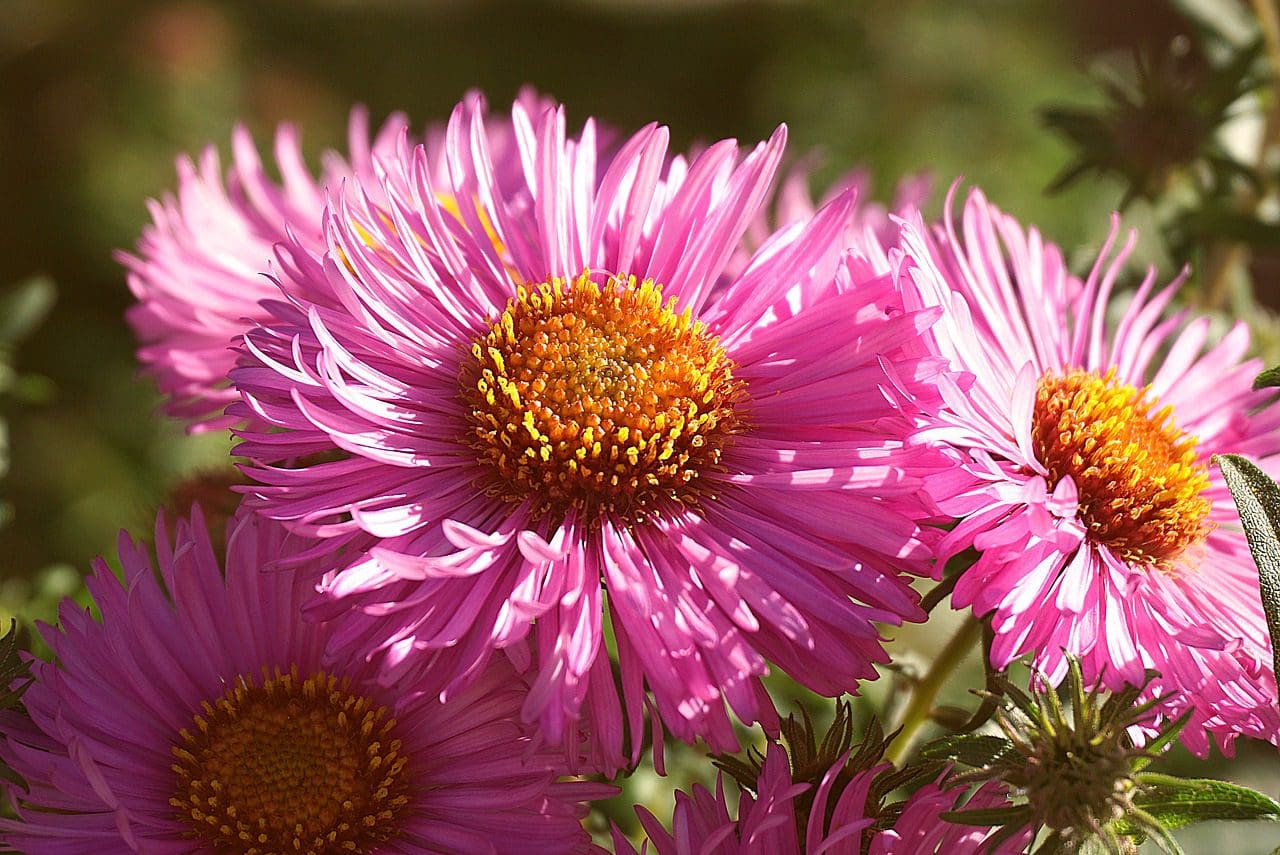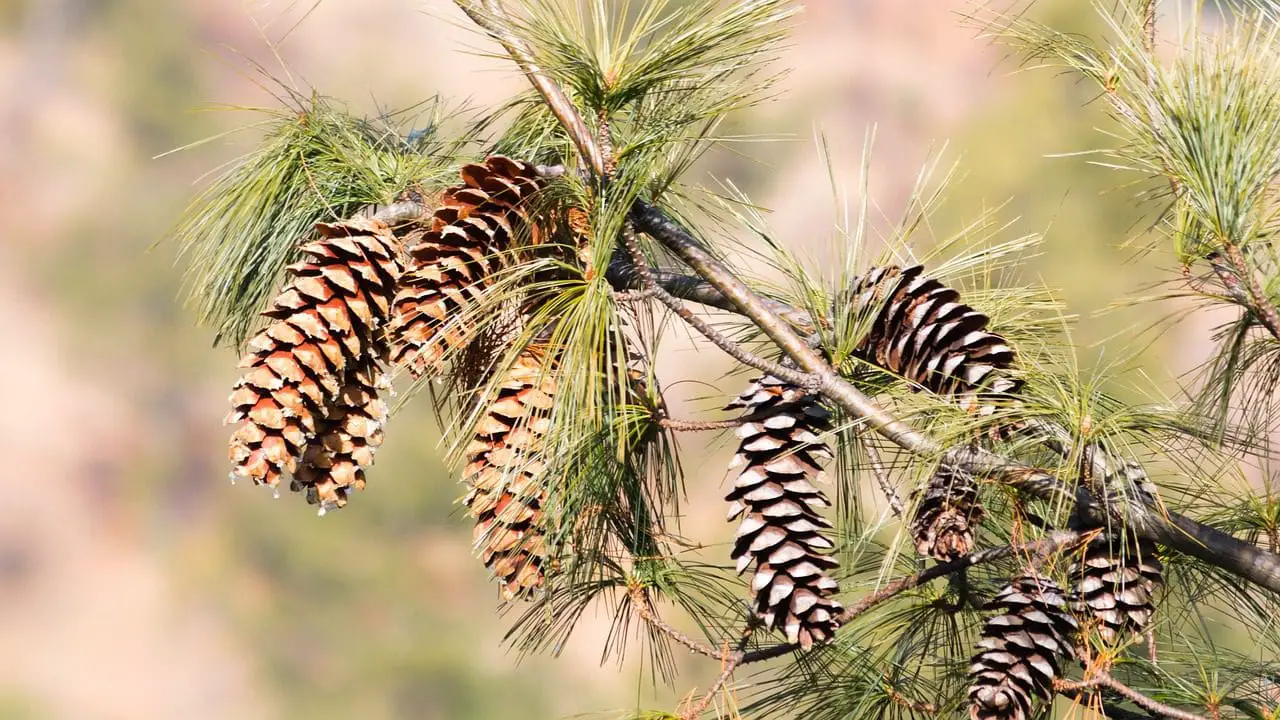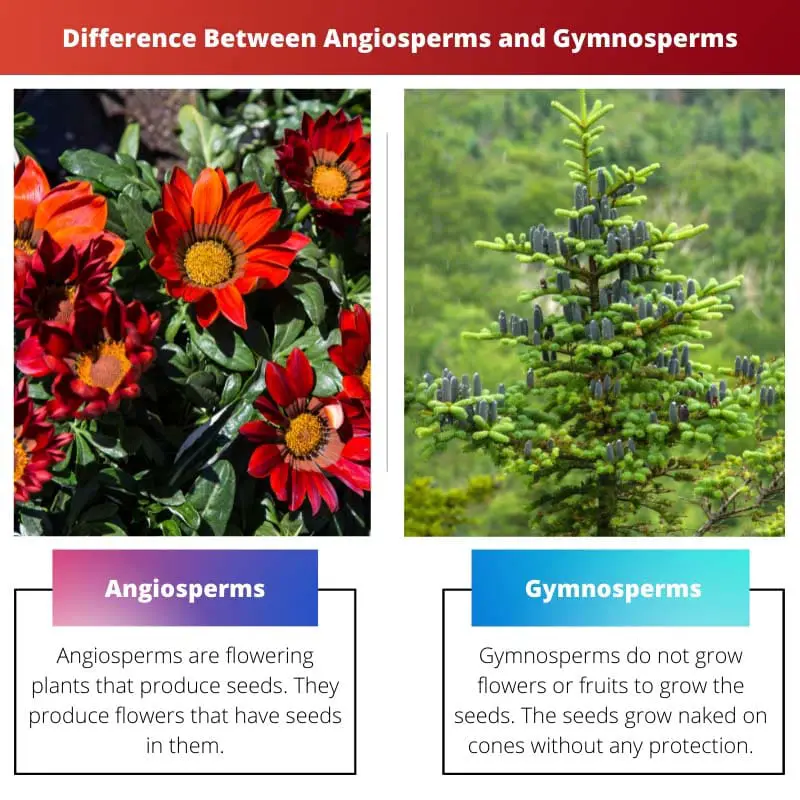The plant kingdom can be classified into 5 different types. Among them, Angiosperm and gymnosperm are to be mentioned. Both Angiosperm and gymnosperm have very similar plant structures.
Key Takeaways
- Angiosperms are flowering plants that produce seeds enclosed in fruits.
- Gymnosperms are non-flowering plants that produce seeds without an enclosing fruit.
- Angiosperms are more diverse and have a wider range of adaptations than gymnosperms.
Angiosperms vs Gymnosperms
The difference between angiosperm and gymnosperm is that the development of the seed is different. Angiosperm plants can bear flowers, whose seeds develop into fruits, but in the case of gymnosperms, there is no flower, and neither the seeds turn into fruits.

Angiosperms are flowering plants. It can be said that angiosperms are the most diverse in the plant kingdom. Angiosperms develop an endless variety of fruits and vegetables.
Angiosperms do not require any special conditions to grow. There are found all around the world in the form of tall trees, shrubs, etc
Gymnosperms are plants that are unable to bear flowers and fruits. They do not produce the seed enclosed in the ovary, and their seeds do not develop into fruits.
The seeds are henceforth called naked seeds. Gymnosperms are vascular plants having two conducting tissues – xylem and phloem.
Comparison Table
| Parameters of Comparison | Angiosperms | Gymnosperms |
|---|---|---|
| Definition | Angiosperms are flowering plants that produce seeds. They produce flowers that have seeds in them. | Gymnosperms do not grow flowers or fruits to grow the seeds. The seeds grow naked on cones without any protection. |
| Source of the name/ Terminology | The term comes from Greek work “ angeion (‘case’) and Sperma (‘seed’) | The term Gymnosperm comes from the Greek, “γυμνόσπερμος”, meaning “naked seed” |
| Method of Reproduction | Angiosperms are plants that reproduce unisexually or bisexually. | Gymnosperm reproduces by a method called alternation of generations. They alternate between sexual and asexual phase. |
| Life cycle | Angiosperm plants have annual or seasonal life- cycle and majorly consists of woody trees. | Gymnosperm plants are majorly evergreen plants and have softwoods. |
| Leaves structure | They have flat leaves. | They have needle-like leaves. |
What are Angiosperm?
Angiosperms are flower-bearing plants that bear seeds in them. The seeds of Angiosperm are formed in the ovaries of the flower. So basically, The flower of the plant is the reproductive organ.
The flowers contain a long slender stick-like figure called a stamen which contains pollens. The Pollens of the plants are scattered by animals. Angiosperms produce fruits for consumption by living beings and provide all foods derived from plants.
Angiosperm can be easily divided into 2 classes: 1) Monocotyledons and 2)dicotyledons.
Monocotyledon, as the name suggests that there, is only 1 seed leaf or embryonic leaf. There are 3 floral petals present on monocotyledons, and the arrangement of vascular bundles in the stem is scattered.
They have parallel veins, and usually, the leaves are long and narrow
Dicotyledon, as the name suggests, means that there exist two seed leaves, also called embryonic leaves.
A major characteristic of Dicotyledon is there are 5 floral petals present in this class of plants, also The vascular bundles in the stem are arranged in concentric circles. Dicotyledon leaves have a network of veins with broad leaves.

What are Gymnosperms?
The plants that do not produce flowers but directly produce seeds are called gymnosperms. The seeds remain exposed, and thus gymnosperm means naked seeds. The seeds are not produced within the ovary.
The seeds are produced in a cone-shaped structure. Gymnosperm reproduces by altering the male and female cones, which is the reproductive organ of gymnosperms.
Gymnosperms can be divided into 4 different types – Coniferophyta, Cycadophyta, Ginkgophyta, and Gnetophyta.
Coniferophyta categories of plants mainly are woody trees like conifers, pine, and fur. Most of the plants prefer a cold climate for survival and are evergreen trees.
The Cycadophyta category has either Male cones or female cones. They have large compound leaves that require a tropical climate for survival. However, these plants can also adapt to surviving in a swampy environment.
Ginkgophyta plants have fan-like tree leaves. Most of these plant species are extinct now. The tree provides treatment for asthma and other circulatory disorders. The plant is also known for its wonders in memory enhancement.
The tree is deciduous, and its height can be up to 20-30 meters.
Gnetophyta consists of shrubs, vines, and also trees. These are found in tropical or temperate climates.

Main Differences Between Angiosperms and Gymnosperms
- The main difference between angiosperms is gymnosperms are in the development of seeds. The seeds of Angiosperms grow enclosed within the flower, whereas the seeds of gymnosperms grow in the cones without any encasement.
- Vessels are formed in angiosperms by the xylem and in the case of gymnosperms, no vessels are formed by the xylem.
- The process of dispersion of pollens is carried out by Animals in Angiosperms, and in the case of gymnosperms, and the pollens are carried by natural elements like air and water.
- Angiosperms are seasonal plants or annual plants, whereas gymnosperms plants are evergreen trees.
- Gymnosperms can adapt to various kinds of temperatures and climates, but angiosperms cannot adapt to various temperatures.
- Angiosperms have trees with flat leaves and have hardwood trees, whereas gymnosperms have needle-like leaves with soft woody trees.
- Angiosperms provide plant-based foods, and gymnosperms can produce lumber, paper, or medicinal plants.
- Some examples of angiosperms are orchids, eudicots, and sunflowers. And examples of gymnosperms are pine, fir, and conifers.

- https://www.cambridge.org/core/journals/mineralogical-magazine/article/abs/weathering-of-soil-minerals-by-angiosperm-and-gymnosperm-trees/09F39A6D891946F86FE60A93270BE757
- https://onlinelibrary.wiley.com/doi/abs/10.1111/mec.15281

The detailed descriptions and classifications of angiosperms and gymnosperms foster a deeper appreciation for the complexity and diversity of plant life.
Indeed, such comprehensive knowledge elevates our understanding of the intricate ecosystems and life forms on our planet.
The article serves as a valuable resource for gaining insights into the unique biological features and classifications of plant species.
The significance of flowers in the reproductive process of angiosperms is quite intriguing and sets them apart from gymnosperms.
Yes, the role of flowers in the reproductive cycle of angiosperms is a remarkable element of their diversity.
The detailed comparison provided in the article clearly outlines the differences in the reproductive methods and life cycle of angiosperms and gymnosperms.
Indeed, the comparative analysis offers a comprehensive understanding of these two plant types.
The distinction between angiosperms and gymnosperms in terms of their method of reproduction and life cycle provides valuable insights into their unique biological processes.
Absolutely, understanding these differences sheds light on the diversity and adaptability of plant species.
The distinction between angiosperms and gymnosperms stems from the way the seeds develop – enclosed in fruits for angiosperms and exposed on cones for gymnosperms.
Absolutely, that’s what sets them apart from each other and is a vital aspect of the plant kingdom.
The article effectively highlights the contrasting leaf structures and reproduction methods between angiosperms and gymnosperms, underscoring their biological diversity.
Indeed, the detailed analysis of these structural and reproductive differences enhances our understanding of plant taxonomy.
The comprehensive insights into the characteristics of leaves and reproductive strategies are truly enlightening.
The distinct classes under angiosperms – monocotyledons and dicotyledons – showcase the rich diversity within this category of flowering plants.
The varied floral and leaf structures between monocotyledons and dicotyledons are truly remarkable.
Absolutely, it’s fascinating to explore the unique characteristics of these two classes of angiosperms.
The detailed explanation of the different types of gymnosperms – Coniferophyta, Cycadophyta, Ginkgophyta, and Gnetophyta – provides a comprehensive overview of these non-flowering plants.
Indeed, the article effectively delves into the distinct characteristics and habitats of these gymnosperm categories.
The diverse range of adaptations and unique features across the different types of gymnosperms is quite intriguing.
The comparison table succinctly contrasts the defining traits of angiosperms and gymnosperms, making it easier to comprehend their differences.
Yes, the organized format of the comparison table enhances the clarity of information provided in the article.
The in-depth exploration of angiosperms and gymnosperms, exemplified by their characteristics and classifications, contributes to a richer understanding of the plant kingdom.
Absolutely, the diverse array of plant structures and reproductive mechanisms provides a fascinating glimpse into the world of plants.